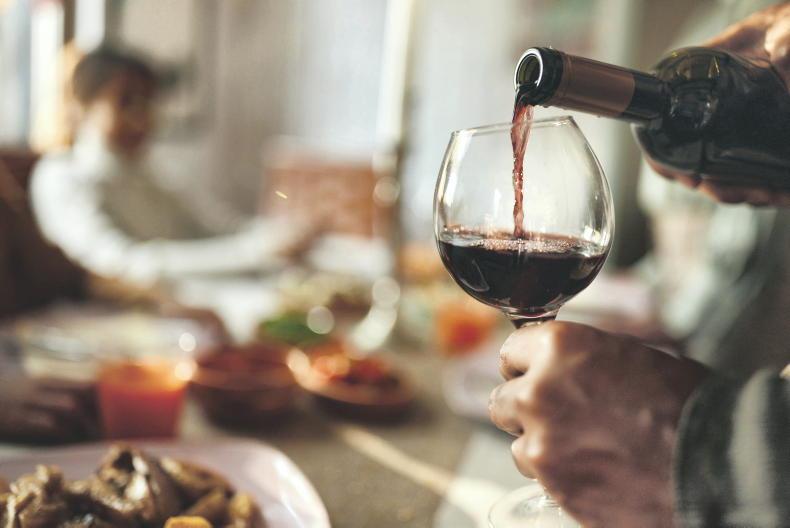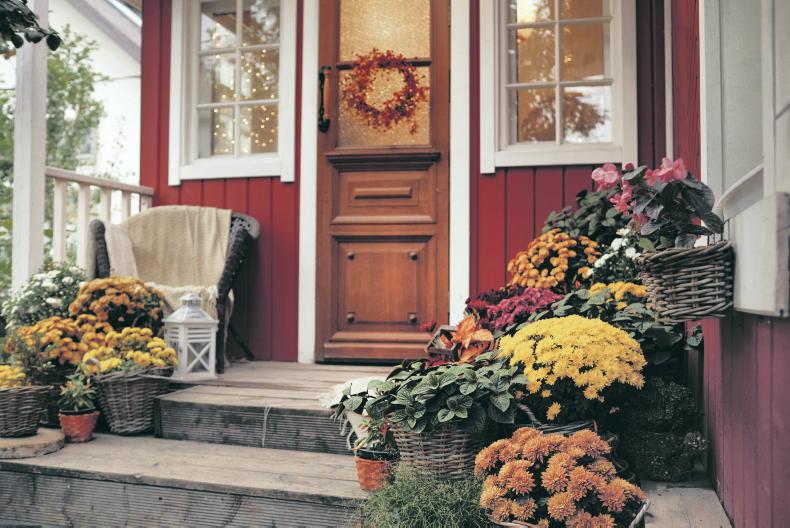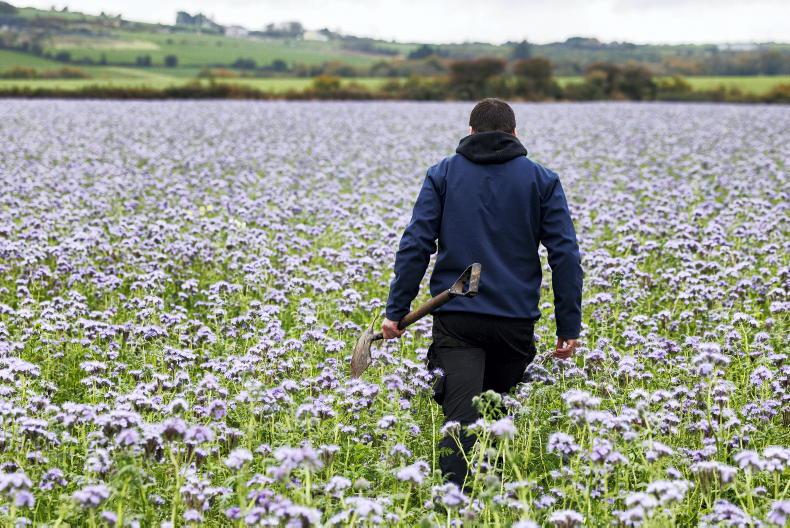Envisioning a late-summer kitchen garden brimming with vegetables, herbs and edible flowers is the perfect antidote to January’s long, cold days. Now is the ideal time to plan, plot and peruse new season seed catalogues whilst sipping plenty of hot tea. And if you feel the urge to embrace the outdoors, January also brings opportunities for rejuvenation, making it a great time to prune fruit bushes and trees.
Winter pruning
This is the time of year for pruning fruit trees, especially apples and pears as trees are dormant. It is this winter formative pruning that helps maintain healthy tree growth and optimise yields.
The aim is to build up a favourable framework of branches by removing wood that is dead, damaged, diseased and deranged (ie nonconformist branches that are crossing or growing inwards), collectively known as the four Ds.
Soft fruit bushes, like blackcurrants and gooseberries, also benefit from winter pruning. Blackcurrants do best on younger wood and as a general rule, any wood more than three to four-years-old should be pruned out by cutting as near as possible to the base of the bush.
This will stimulate strong new shoots from the soil. Aim to remove up to one third of old wood each year which is easily identified as it is thick and dark in colour and sometimes the dead stalks of the previous season’s crop are evident.
Gooseberries can be grown as fans, cordons or standards but are more commonly grown as bushes. To prune bush gooseberries, start with the four Ds above.
Thin out older, crowded stems to improve airflow and light penetration, aiming to keep the centre open. Finally, shorten the remaining branches by about a third to encourage new growth and maintain a compact, productive shape.
Before pruning any plant, take a moment to plan your cuts and only use clean, sharp, and well-oiled tools to ensure the health of the tree.
Seedy business
When it comes to seeds, my advice is to shop local, as seeds trialled and saved in Ireland are adapted to our climate and are most suited to our growing conditions.
Brown Envelope Seeds (brownenvelopeseeds.com) and the Irish Seed Savers Association (irishseedsavers.ie) grow lots of great varieties of Irish open-pollinated seeds which are available on their online shops.
Hybrid seeds are more expensive and are not suitable for seed saving but if you are interested in sourcing them, check out Green Vegetable Seeds (greenvegetableseeds.com) where Klaus Laitenberger stocks some of his favourite hybrid varieties amongst a host of other great edibles, including heirlooms and open-pollinated seeds.
It pays to start by reviewing last season’s seeds and successes, then create a list of all the vegetables and varieties you’d like to grow this season – making it as long and fanciful as you dare.
Next, refine your wishlist to a more practical selection and avoid spending a fortune by focusing on seeds you can realistically grow given your available space, time and conditions.
While it’s too early to sow most seeds, it’s important to place orders early to ensure you get the best selection, as good seed varieties sell out fast.
Keep an eye out for any seed swaps happening in your locality. These are
a fantastic opportunity to meet like-minded people and source a variety of
interesting seeds that didn’t make the original list.
Q&A: Should I buy new seeds – or will the old ones be okay?

Brown Envelope Seeds offer a large variety.
I have lots of half-full packets of seed from previous years and am wondering if I need to buy new ones? - Brendan Walsh, Co Kerry
Alas there is no definitive answer to how long seeds last, as they are living organisms, but guidelines can help. Seeds stored in cool, dry conditions last longer than those in warm, humid environments.
For optimum storage conditions, keep seeds in their original resealed packets in an airtight container in the fridge, but if those are unavailable, brown envelopes will suffice as they help draw moisture away. Some seeds, like parsnips and onions, are short-lived, while most vegetable and flower seeds remain viable for at least two years.
Older seeds often have lower germination rates, which may translate into a loss of your valuable time, space and energy.
A simple germination test will help ascertain if seeds are worth sowing. To test, place 10 seeds on a damp paper towel, fold it over, and seal it in a loosely tied plastic bag. Keep it in a warm spot and over a two-week period, check regularly to ensure the towel stays damp. If nine out of 10 seeds germinate, the rate is 90%; if only three germinate, the rate is a mere 30%.
The non-viable seeds make ideal fodder for birds in the leaner months.
Envisioning a late-summer kitchen garden brimming with vegetables, herbs and edible flowers is the perfect antidote to January’s long, cold days. Now is the ideal time to plan, plot and peruse new season seed catalogues whilst sipping plenty of hot tea. And if you feel the urge to embrace the outdoors, January also brings opportunities for rejuvenation, making it a great time to prune fruit bushes and trees.
Winter pruning
This is the time of year for pruning fruit trees, especially apples and pears as trees are dormant. It is this winter formative pruning that helps maintain healthy tree growth and optimise yields.
The aim is to build up a favourable framework of branches by removing wood that is dead, damaged, diseased and deranged (ie nonconformist branches that are crossing or growing inwards), collectively known as the four Ds.
Soft fruit bushes, like blackcurrants and gooseberries, also benefit from winter pruning. Blackcurrants do best on younger wood and as a general rule, any wood more than three to four-years-old should be pruned out by cutting as near as possible to the base of the bush.
This will stimulate strong new shoots from the soil. Aim to remove up to one third of old wood each year which is easily identified as it is thick and dark in colour and sometimes the dead stalks of the previous season’s crop are evident.
Gooseberries can be grown as fans, cordons or standards but are more commonly grown as bushes. To prune bush gooseberries, start with the four Ds above.
Thin out older, crowded stems to improve airflow and light penetration, aiming to keep the centre open. Finally, shorten the remaining branches by about a third to encourage new growth and maintain a compact, productive shape.
Before pruning any plant, take a moment to plan your cuts and only use clean, sharp, and well-oiled tools to ensure the health of the tree.
Seedy business
When it comes to seeds, my advice is to shop local, as seeds trialled and saved in Ireland are adapted to our climate and are most suited to our growing conditions.
Brown Envelope Seeds (brownenvelopeseeds.com) and the Irish Seed Savers Association (irishseedsavers.ie) grow lots of great varieties of Irish open-pollinated seeds which are available on their online shops.
Hybrid seeds are more expensive and are not suitable for seed saving but if you are interested in sourcing them, check out Green Vegetable Seeds (greenvegetableseeds.com) where Klaus Laitenberger stocks some of his favourite hybrid varieties amongst a host of other great edibles, including heirlooms and open-pollinated seeds.
It pays to start by reviewing last season’s seeds and successes, then create a list of all the vegetables and varieties you’d like to grow this season – making it as long and fanciful as you dare.
Next, refine your wishlist to a more practical selection and avoid spending a fortune by focusing on seeds you can realistically grow given your available space, time and conditions.
While it’s too early to sow most seeds, it’s important to place orders early to ensure you get the best selection, as good seed varieties sell out fast.
Keep an eye out for any seed swaps happening in your locality. These are
a fantastic opportunity to meet like-minded people and source a variety of
interesting seeds that didn’t make the original list.
Q&A: Should I buy new seeds – or will the old ones be okay?

Brown Envelope Seeds offer a large variety.
I have lots of half-full packets of seed from previous years and am wondering if I need to buy new ones? - Brendan Walsh, Co Kerry
Alas there is no definitive answer to how long seeds last, as they are living organisms, but guidelines can help. Seeds stored in cool, dry conditions last longer than those in warm, humid environments.
For optimum storage conditions, keep seeds in their original resealed packets in an airtight container in the fridge, but if those are unavailable, brown envelopes will suffice as they help draw moisture away. Some seeds, like parsnips and onions, are short-lived, while most vegetable and flower seeds remain viable for at least two years.
Older seeds often have lower germination rates, which may translate into a loss of your valuable time, space and energy.
A simple germination test will help ascertain if seeds are worth sowing. To test, place 10 seeds on a damp paper towel, fold it over, and seal it in a loosely tied plastic bag. Keep it in a warm spot and over a two-week period, check regularly to ensure the towel stays damp. If nine out of 10 seeds germinate, the rate is 90%; if only three germinate, the rate is a mere 30%.
The non-viable seeds make ideal fodder for birds in the leaner months.










SHARING OPTIONS